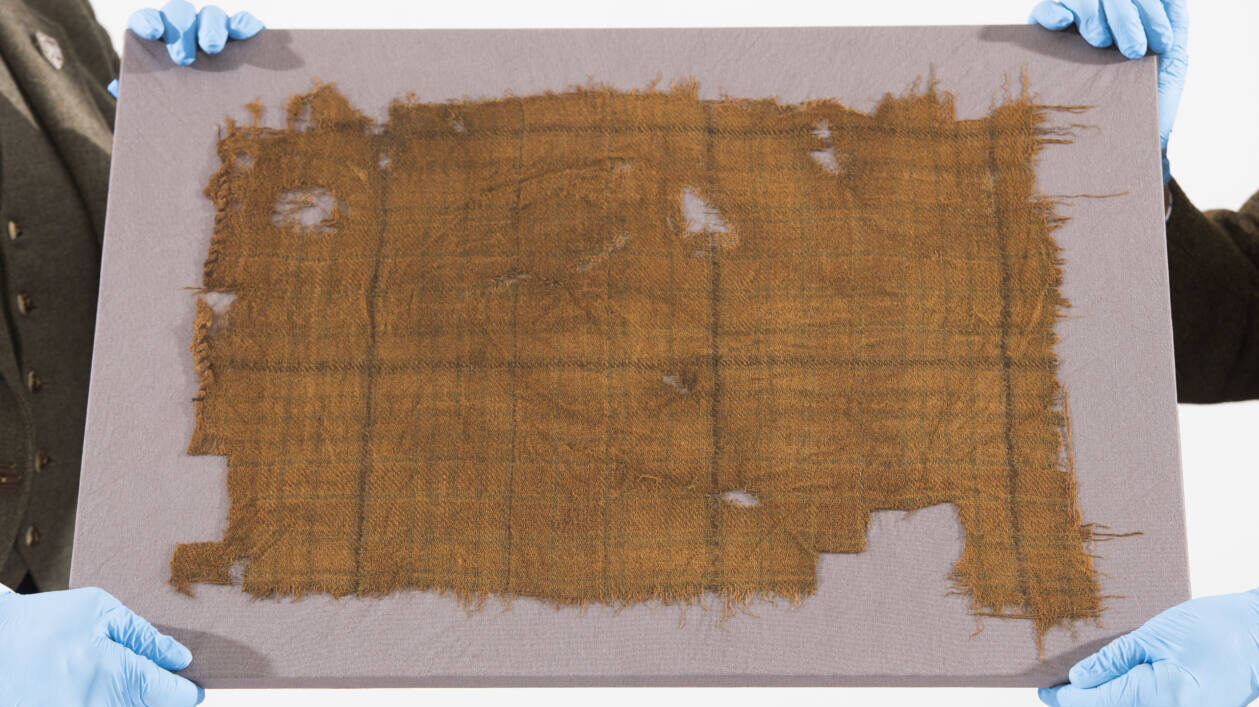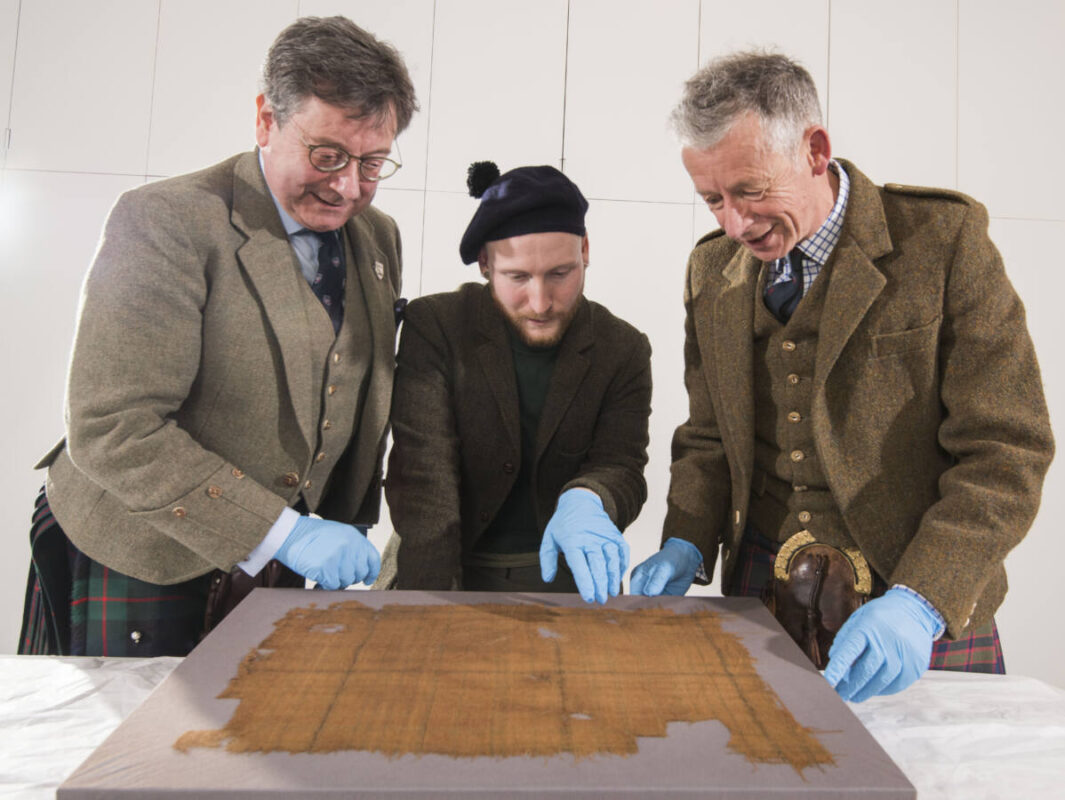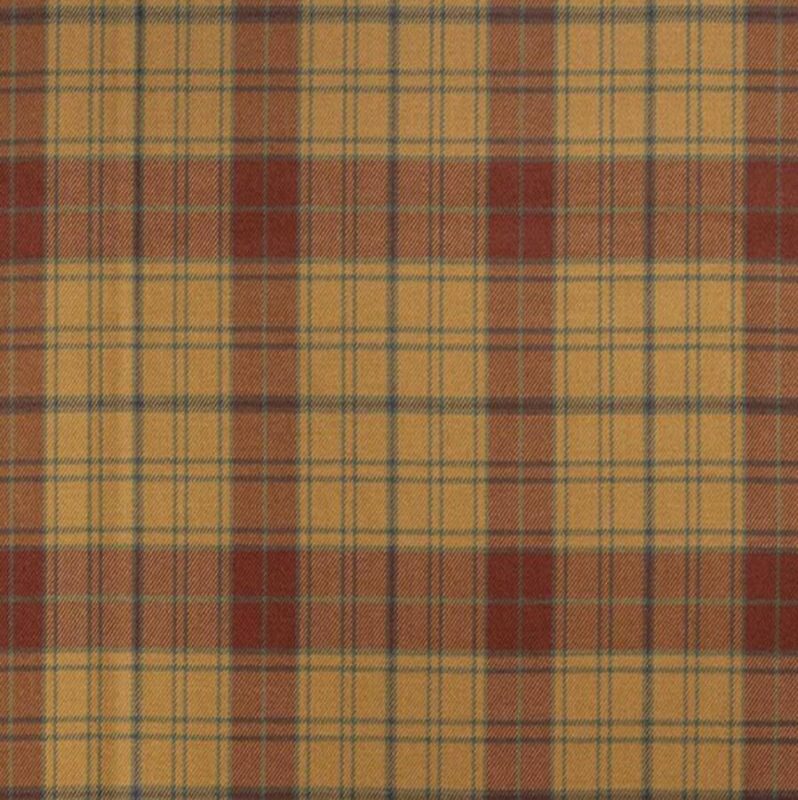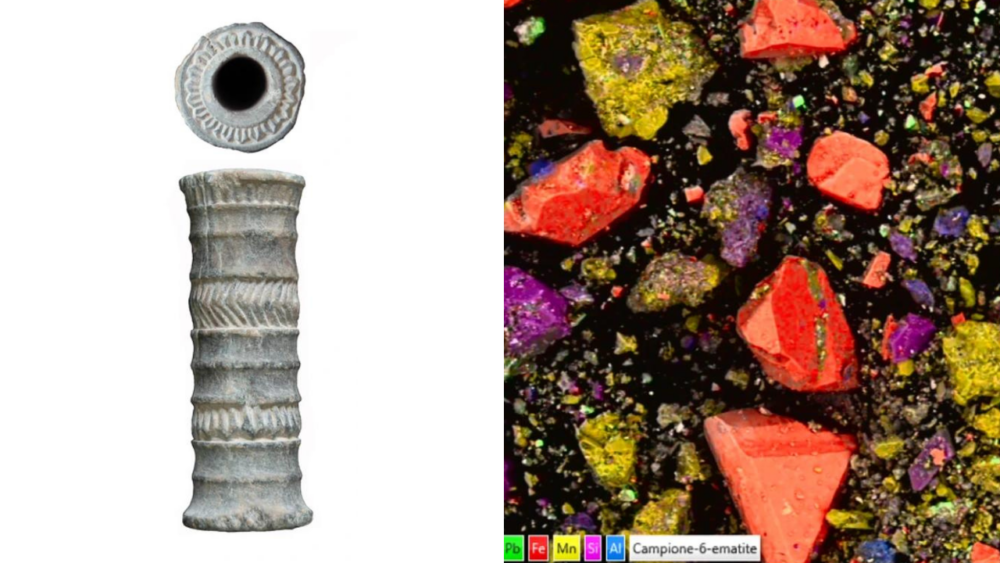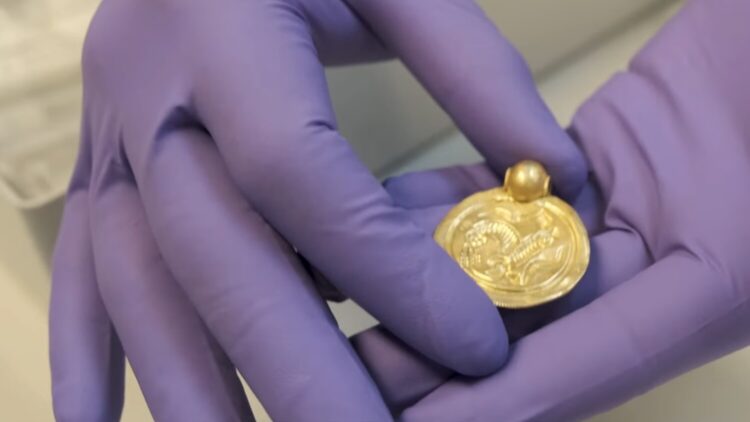Designers recreate the oldest-known ‘true’ Scottish tartan for new kilts
About 500 years ago, someone in Scotland lost track of their tartan.
A scrap of the fabric reemerged in a peat bog late in the 20th century. Carbon dating pegged the plaid to about 1500-1600 C.E., making it the oldest “true tartan” specimen in Scotland, according to researchers at The Scottish Tartans Authority.
Now it’s available for anyone to wear, thanks to a collaboration between the nonprofit STA and Scottish clothier The House of Edgar.
The House of Edgar recreated this significant piece of history, preserving the ancient design while “refining the shades to something that would have existed at the time but which also work today,” the STA’s head of research and collections, Peter Eslea MacDonald, told CNN.
The Scottish Register of Tartans defines exactly what “tartan” is, saying, “A tartan is a design which is capable of being woven consisting of two or more alternating coloured stripes which combine vertically and horizontally to form a repeated chequered pattern.”
Specific colors and styles of tartan are associated with a family name or an area of Scotland — though the Scottish Register notes that certain patterns can be worn by anyone.
Researchers determined that the long-lost tartan, found in the 1980s, used naturally occurring dyes to create a yellow, green and red pattern. The STA dubbed it the Glen Affric tartan after the place where it was discovered.
In 2023, the delicate fabric went on display at the Victoria and Albert Museum Dundee, as part of a larger exhibit on tartans. Now, wool woven in the Glen Affric colors and pattern is on sale from longtime tartan manufacturer The House of Edgar.
“I create new tartans every day but this project is truly special — a once-in-a-lifetime opportunity to recreate a piece of history,” House of Edgar designer Emma Wilkinson told The Guardian.
Kilt-making businesses can order the fabric directly from The House of Edgar. The dry clean-only, 100% new wool fabric is part of the brand’s Seventeen Eighty Three collection and comes in a medium weight. Here’s what it looks like, according to its product page:
The House of Edgar doesn’t sell to the public, so you’ll have to find a retailer that purchased the fabric to create kilts or other clothing items from it.
But in case you were worried that some poor, long-ago Scotsman was left without his kilt, don’t fret. Tartan expert MacDonald told CNN that the original scrap was likely an upper-body wrap of some type.
“It was undoubtedly a status piece,” MacDonald said. “It is likely to have belonged to an important person, possibly a woman or gentleman of rank.”
How it ended up in the bog, however, will remain a Highlands mystery.


